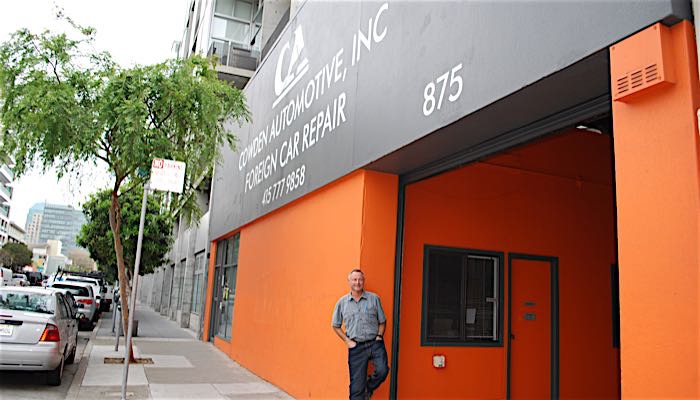According to the latest Market Intelligence survey data from Kelly Blue Book (kbb.com), in-market car shoppers indicate they are feeling the economy’s strong influence with regard to their attitudes about financing and purchasing vehicles. The site has more than 15 million in-market vehicle shoppers each month. Most in-market shoppers are planning to spend a relatively small amount of money on their next vehicle purchase and are more likely to buy used versus new. In addition, more than one-third of in-market car shoppers say they plan to pay the entire cost of their next vehicle purchase in cash and they are not influenced by incentive offers.
Nearly three-quarters (74 percent) of those surveyed said they plan to purchase within the next six months, and more consumers said they are in the market for a used car (67 percent) than a new car (33 percent). In addition, 42 percent of used-car shoppers and 20 percent of new-car shoppers said they plan to pay the entire cost of their next vehicle in cash.
Most used-car shoppers (62 percent) said they plan to spend less than $15,000 on their next vehicle purchase, while half of new-car shoppers (50 percent) said they plan to spend $25,000 or less on their next vehicle purchase.
The majority (82 percent) of used-car shoppers and more than half (51 percent) of new-car shoppers said that incentive offers have no effect on the timing of their next vehicle purchase. In addition, 81 percent of used-car shoppers and 48 percent of new-car shoppers said that the availability of incentives have no effect on their specific vehicle choice (make/model).
"In-market car shoppers are taking a decidedly conservative approach to car buying right now, which we think can be directly attributed to low consumer confidence in the current economy," said James Bell, executive market analyst for Kelley Blue Book’s kbb.com. "It seems people are reassessing their financial situations and deciding to spend less, buy used and pay more often with cash. Incentives have loosened their tight grip on the American consumer, with more people deciding to purchase what they can truly afford versus what they can get with over-extended credit lines and incentive offers on the hood from manufacturers."
Of those who intend to finance their next vehicle purchase, zero-percent financing was listed as the most appealing incentive offer at 30 percent, followed by low monthly payments at 21 percent.
In addition, women were twice as likely to find low monthly payments the most appealing incentive offer when compared to men (32 percent of women versus 16 percent of men).
By far the most popular loan term was 60 months, with 42 percent of respondents indicating they prefer to finance over five years. Second-most popular was 36 months at 21 percent, followed by 48 months at 20 percent. Only 11 percent preferred 72 months, and just five percent cited 24 months.
More than half (57 percent) of total respondents intend to research vehicle financing options online, and 50 percent plan to obtain pre-approval through a bank/credit union. Only 34 percent said they plan to obtain financing at the dealership at the time of purchase. Shoppers cited control in negotiations as the top motivator (44 percent) behind financing through a bank/credit union, followed by low interest rate (34 percent). Shoppers cited convenience (54 percent) as the primary motivator behind financing at the dealership, followed by low interest rate (32 percent).
The average shopper has three vehicles in his/her consideration set, and 83 percent of all survey respondents said they are still undecided on the make and model of their next vehicle. Younger car shoppers (age 34 and under) are more open to buying either a domestic or import brand (45 percent), compared with shoppers age 55-plus, who are more likely to have decided upon either a domestic brand (39 percent) or an import brand (32 percent).
Among both new- and used-car shoppers, price and durability/reliability/quality tied at 33 percent as the top two deciding factors when considering a vehicle to purchase. The next-highest deciding factor was past experience with the brand, rated at 12 percent.
Both new- and used-car shoppers feel that negotiating is a crucial part of the car-buying process, with 62 percent indicating they prefer negotiating to having a single set price. That number increases more among younger car buyers when examining the data demographically, as 73 percent of respondents age 34 and under feel that negotiating is a crucial part of the process, compared with 59 percent of respondents in the 35-54 and 55-plus age categories.
Forty percent of respondents use the average transaction price (New Car Blue Book Value) as the starting point for vehicle negotiations, while 32 percent begin negotiating with the dealer invoice price. Only 9 percent of shoppers indicated they began negotiations with the manufacturer’s suggested retail price (MSRP).
In addition, most consumers (38 percent) said that if they pay the average transaction price, they feel they have gotten a good deal.
The Kelley Blue Book Market Intelligence data presented above is based on a survey of 338 in-market car shoppers on Kelley Blue Book’s website from June 18–21, 2010.

